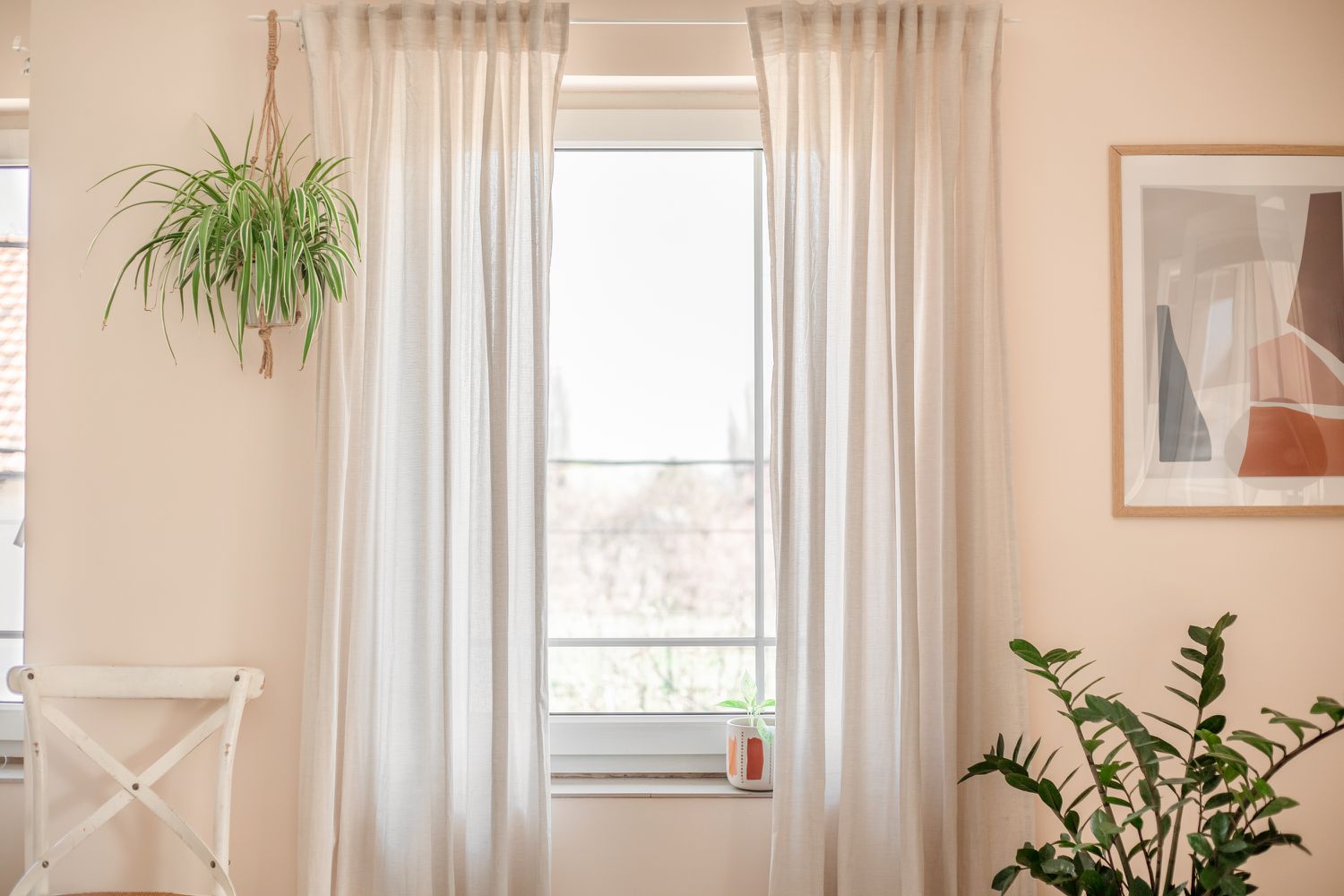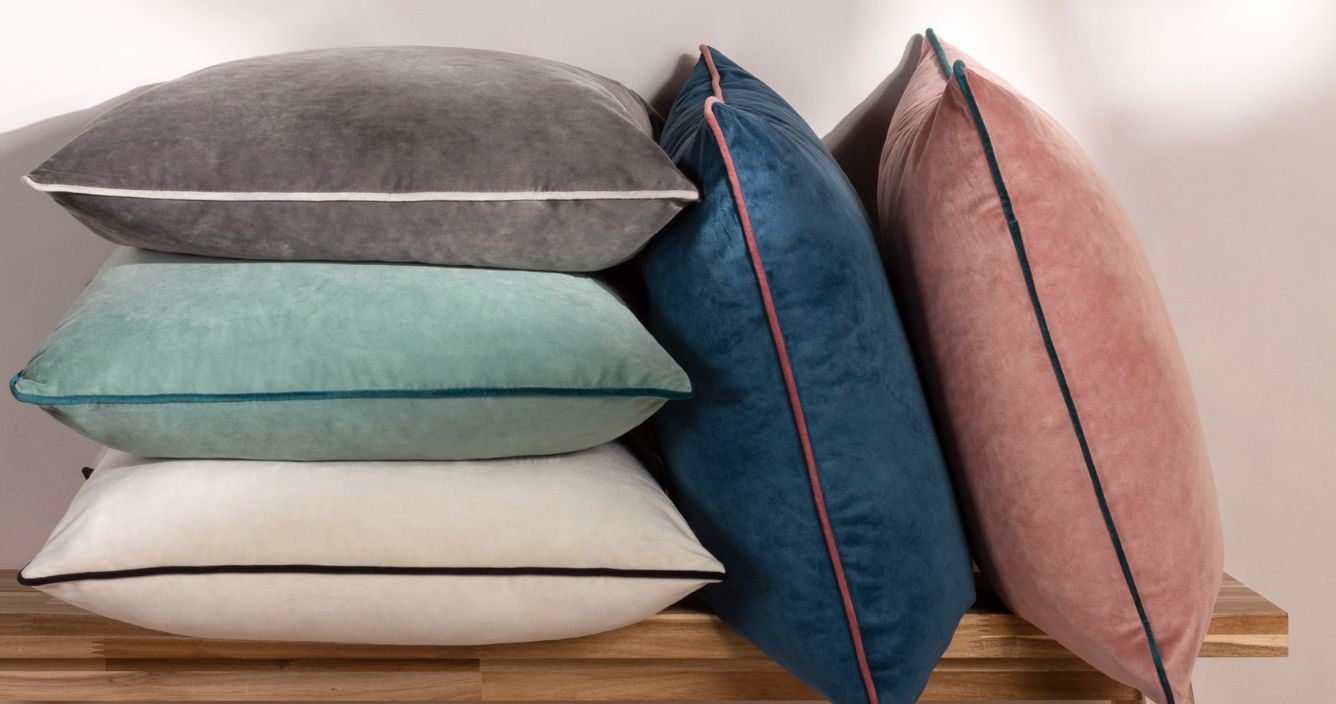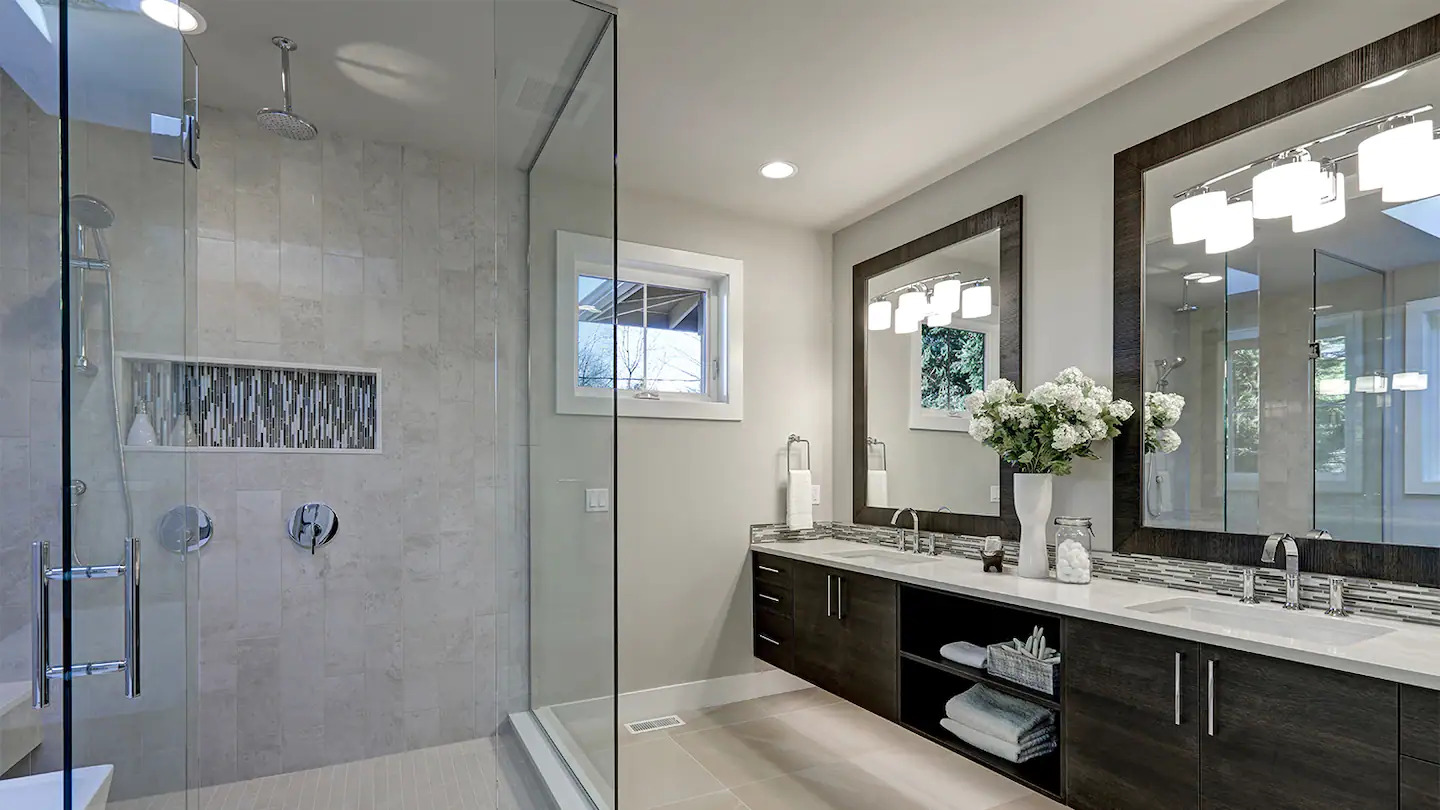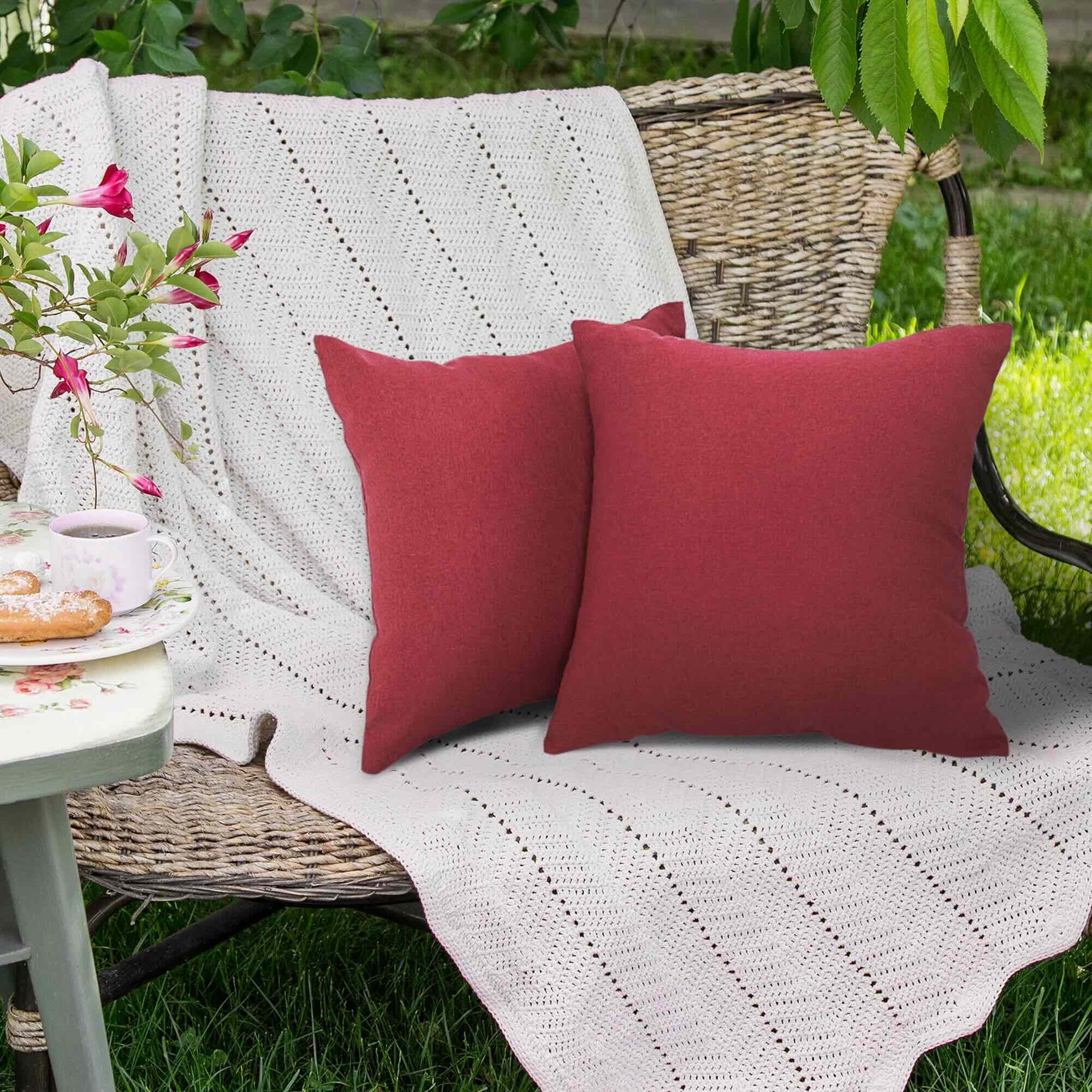

Articles
How To Pick Curtains
Modified: October 18, 2024
Discover helpful articles on how to pick curtains and enhance your home decor. Get expert tips, advice, and recommendations for choosing the perfect curtains for any room.
(Many of the links in this article redirect to a specific reviewed product. Your purchase of these products through affiliate links helps to generate commission for Storables.com, at no extra cost. Learn more)
Introduction
Welcome to the wonderful world of curtains! Whether you’re decorating a new home, revamping your existing space, or simply looking for a quick way to spruce up a room, choosing the right curtains can make all the difference. Curtains not only add style and personality to a space but also serve functional purposes such as providing privacy, controlling light, and insulating against drafts.
However, with so many options available, selecting the perfect curtains can be a daunting task. Fear not, as in this article, we will guide you through the process of picking curtains that meet your needs and preferences. From measuring your windows to considering different fabric options and styles, we will cover everything you need to know to make an informed decision.
So, let’s dive in and unravel the secrets of selecting curtains that will transform your space into a cozy and inviting haven.
Key Takeaways:
- Understanding your needs, measuring accurately, and considering fabric, style, and hardware are crucial steps in choosing the perfect curtains. Take your time and trust your instincts to create a visually appealing and functional window treatment.
- Balancing pricing and quality, considering privacy and light control, and following installation and maintenance tips will ensure long-lasting satisfaction with your curtains. Transform your space with the power of well-chosen window treatments.
Step 1: Determine Your Needs and Preferences
Before you start browsing through a plethora of curtain options, it’s important to determine your needs and preferences. Understanding what you’re looking for will help you narrow down your choices and make the selection process much easier.
First, consider the purpose of the curtains. Are you looking for curtains primarily for privacy, to block out light, or to enhance the aesthetic appeal of the room? Knowing the main goal will help you prioritize certain features such as fabric thickness or blackout capabilities.
Next, think about the style and theme of the room. Are you going for a modern and minimalistic look, or do you prefer a more traditional and elegant feel? Consider the existing color scheme, furniture, and overall ambiance of the space. This will help you choose curtains that complement the room’s décor and create a cohesive look.
Additionally, consider the size of your windows. Do you have standard-sized windows or larger, floor-to-ceiling windows? This will affect the curtain length and width that you will need. Measure your windows accurately to ensure a proper fit.
Finally, set a budget for your curtains. Determine how much you are willing to spend and look for options within that range. Keep in mind that higher-quality materials and custom-made curtains may come with a higher price tag, but they can also provide better durability and overall satisfaction in the long run.
By taking the time to determine your needs and preferences, you will be well-equipped to make decisions that align with your desired outcome. This initial step sets the foundation for the rest of the curtain selection process, making it easier to navigate through the numerous options available.
Step 2: Measure Your Windows
Accurate measurements are crucial when it comes to selecting curtains that fit your windows perfectly. Before you start shopping, grab a measuring tape and follow these steps to ensure precise measurements:
- Start by measuring the width of your window frame. Measure from one end of the frame to the other, and jot down the measurement. It’s important to measure the inside width of the frame if you want your curtains to hang inside the window recess. For a more expansive look, measure the outside width of the frame or extend the measurements beyond the width of the frame.
- Next, measure the height of your window. Measure from the top edge of the window frame down to the desired length of the curtains. If you want floor-length curtains, measure down to the floor. If you prefer curtains that hang just above the window sill, measure accordingly. Remember to account for any curtain header or rod pocket that may add extra length to the curtains.
- If you have multiple windows in a room, measure each window individually. Windows may appear identical, but slight variations in measurements are common. By measuring each window separately, you ensure that your curtains will fit perfectly on every window.
- Consider the desired fullness or gather of your curtains. Fullness refers to the amount of fabric used in relation to the width of the window. A general rule of thumb is to multiply the width of the window by 1.5 to 2.5. This will provide a nice, full look when the curtains are closed. Adjust this measurement based on your personal preference and the style of curtains you’ve chosen.
Remember to double-check your measurements to ensure accuracy before making any purchases. It’s better to measure twice than end up with ill-fitting curtains that don’t achieve the desired look.
Once you have your measurements in hand, you can confidently move on to the next step of selecting the right curtains for your windows.
Step 3: Choose the Right Fabric
When it comes to curtains, the fabric you choose can have a significant impact on both the aesthetic appeal and functionality of the window treatment. There are various factors to consider when selecting the right fabric for your curtains:
Light Control: If you want to block out sunlight and maintain privacy, opt for heavier fabrics such as velvet, suede, or blackout curtains. These fabrics have a high opacity and effectively prevent light from seeping through. Alternatively, if you want a softer, filtered light effect, lightweight fabrics like linen or sheer curtains can create an airy and ethereal ambiance.
Privacy: Depending on the level of privacy you desire, consider the fabric’s transparency. Sheer or semi-transparent fabrics allow ample natural light while maintaining a level of privacy during the day. If privacy is a top concern, choose curtains with a tight weave or solid fabric that cannot be easily seen through.
Durability: Consider the durability of the fabric, especially if the curtains will be exposed to high levels of sunlight or need to withstand frequent usage. Fabrics like cotton, polyester, and linen are known for their durability and are suitable for everyday curtain use. Look for curtains with a high thread count, as this indicates a denser and more durable fabric.
Cleaning and Maintenance: Take into account the cleaning and maintenance requirements of the fabric. Some fabrics, like silk and velvet, may require professional cleaning or delicate handwashing. If you prefer low-maintenance curtains, opt for machine-washable fabrics like cotton or synthetic blends that can withstand regular washing.
Style and Texture: Consider the overall style and texture of the fabric and how it complements the room’s décor. Solid-colored fabrics offer versatility and can easily blend with different color schemes. Patterns and textures can add depth and visual interest to the curtains, enhancing the room’s aesthetic appeal. Remember to consider other elements in the room, such as furniture upholstery and wall textures, to create a cohesive look.
It’s also worth noting that certain fabrics may require additional lining for added insulation, light control, or longevity. Lining can improve the drape and performance of the curtains, so consider this factor when making your fabric selection.
By considering these factors, you can choose a fabric that not only meets your functional needs but also enhances the overall look and feel of your space. So, take your time to explore various fabric options and find the perfect curtain fabric for your windows.
Step 4: Consider Curtain Length and Width
The length and width of your curtains play a crucial role in achieving the desired aesthetic and functionality for your windows. Here are some factors to consider when determining the appropriate curtain length and width:
Length: The length of your curtains depends on personal preference and the overall style you want to achieve. There are three common curtain lengths:
- Just above the window sill: This length is ideal if you want to showcase any decorative elements or architectural details on the window sill. It creates a clean and minimalistic look.
- Floor-length: Floor-length curtains are a classic choice and add a touch of elegance to any room. They extend to the floor and provide a more formal and dramatic look.
- Puddling: Puddled curtains create a luxurious and romantic feel. The fabric extends beyond the floor and creates a gentle pooling effect. This style is best suited for formal spaces where there is minimal traffic near the curtains.
When measuring the length, account for the curtain header or rod pocket that will add additional height. Take accurate measurements from the top of the rod or the bottom of the header down to the desired length, whether it’s just above the window sill, at floor-level, or for puddling.
Width: The width of your curtains determines their fullness and how well they cover the window when closed. Consider the following guidelines:
- Overlap: To ensure proper light blockage and privacy, extend the curtain rod beyond the window frame on each side. This will allow the curtains to overlap the window when closed, preventing any gaps.
- Gather: The amount of gather you desire depends on your personal preference and the style you want to achieve. For a more tailored and contemporary look, choose curtains that are approximately one and a half times the width of the window. For a fuller, more traditional look, opt for curtains that are two or two and a half times the width of the window.
If your desired curtain width is not readily available, you can achieve a fuller look by purchasing multiple panels and positioning them next to each other on the curtain rod.
Remember, these guidelines are just suggestions, and ultimately, the length and width of your curtains should align with your personal style and aesthetic preferences. Taking accurate measurements and considering the desired look will ensure that your curtains fit beautifully and enhance the overall appeal of your windows.
Read more: How To Pick Insulation
Step 5: Decide on Curtain Style and Design
The style and design of your curtains can significantly impact the overall aesthetic of your space. Whether you’re aiming for a modern, traditional, or eclectic look, here are some popular curtain styles to consider:
1. Rod Pocket Curtains: These curtains have a pocket or casing at the top where the curtain rod is inserted. They create a gathered, casual look and are suitable for lightweight fabrics. Rod pocket curtains are easy to install and offer a simple and timeless style.
2. Tab Top Curtains: Tab top curtains have fabric loops or tabs at the top through which the curtain rod is threaded. They provide a casual and relaxed look, perfect for informal spaces. Tab top curtains work well with lightweight to medium-weight fabrics.
3. Grommet Curtains: Grommet curtains have metal or plastic rings embedded in the fabric at the top, through which the curtain rod is threaded. They offer a contemporary and streamlined appearance. Grommet curtains work best with medium-weight to heavier fabrics and provide smooth and easy movement along the rod.
4. Pleated Curtains: Pleated curtains have sewn-in pleats at the top, creating a tailored and elegant look. There are various types of pleats, including pinch pleats, goblet pleats, and box pleats. Pleated curtains are often made from medium to heavyweight fabrics and can be used to create a formal and sophisticated atmosphere.
5. Sheer Curtains: Sheer curtains are crafted from lightweight and translucent fabrics, allowing plenty of natural light to pass through while creating a soft and delicate look. They offer privacy during the day while maintaining an airy and ethereal feel in the room. Sheer curtains are versatile and can be paired with other curtain styles for added privacy and light control.
In addition to the curtain style, consider the design or pattern of the fabric. Whether it’s solid colors, bold prints, floral motifs, or geometric patterns, the design of the fabric can add personality and enhance the overall décor of your space.
Remember to consider the existing style and theme of your room when selecting a curtain style and design. Choose a style that complements the overall aesthetic and creates a harmonious atmosphere. By choosing the right curtain style and design, you can transform your windows into stunning focal points that reflect your personal style.
When picking curtains, consider the length and fabric. Floor-length curtains can make a room feel taller, while heavier fabrics can provide better insulation and light control.
Step 6: Select the Appropriate Curtain Hardware
Once you have decided on the style and design of your curtains, it’s time to select the appropriate curtain hardware to ensure proper installation and functionality. Curtain hardware includes the curtain rod, brackets, finials, and any additional accessories. Consider the following factors when choosing your curtain hardware:
Curtain Rod: Select a curtain rod that complements the overall style and aesthetic of your space. There are various options available, including metal, wood, or decorative rods. Consider the weight of your curtains and choose a sturdy rod that can support the fabric without sagging. Measure the width of your window and make sure the curtain rod extends beyond the frame to allow for proper curtain placement.
Brackets: Brackets are essential for securing the curtain rod to the wall. Choose brackets that are strong and durable to support the weight of the curtains. Depending on the type of curtain rod, opt for wall-mounted brackets or ceiling-mounted brackets for a dramatic effect. Consider the finish of the brackets to ensure they complement the overall look of the curtain hardware.
Finials: Finials are decorative end caps that attach to the ends of the curtain rod. They add a finishing touch to the overall appearance of the curtains. Finials come in various shapes, designs, and materials, such as brass, crystal, or carved wood. Select finials that match your desired style and complement the curtain fabric and hardware.
Additional Accessories: Depending on your curtain style, you may need additional accessories, such as curtain rings or clips, tiebacks, or holdbacks. Curtain rings or clips are used to hang curtains with rod pockets or tabs. Tiebacks or holdbacks help to hold the curtains open to allow more light into the room. Consider these additional accessories to enhance the functionality and aesthetics of your curtains.
When selecting curtain hardware, it’s important to ensure that it is compatible with the curtain style and weight. The right curtain hardware will not only ensure proper installation but also enhance the overall look and functionality of your curtains.
Remember to follow the manufacturer’s instructions for installing the curtain hardware correctly. Proper installation will ensure that your curtains are securely in place and can be opened and closed smoothly.
So, take your time to explore different options and choose curtain hardware that complements your curtains and enhances the beauty of your windows.
Step 7: Consider Privacy and Light Control
When selecting curtains, it’s essential to consider the level of privacy and light control you desire for your space. Curtains can play a significant role in maintaining privacy and regulating the amount of natural light that enters the room. Here are some factors to consider:
Opacity: Different fabrics have varying levels of opacity, which affects the amount of light that can pass through them. Sheer or semi-sheer curtains allow ample natural light to filter into the room while maintaining a level of privacy during the day. These are ideal if you want to maintain a light and airy feel in your space. On the other hand, if you require more privacy and light control, consider curtains with a higher opacity such as blackout or opaque fabrics.
Lining: Adding a lining to your curtains can provide additional benefits such as increased privacy, improved light control, and insulation. Lining can also enhance the drape and appearance of the curtains. Depending on your needs, you can opt for standard lining, blackout lining, or thermal lining to regulate light, temperature, and privacy in your room.
Layers: Layering curtains is another way to achieve privacy and light control. Combining a sheer curtain with a heavier curtain or using double-layered curtains can provide flexibility in adjusting the amount of light that enters the room. During the daytime, you can draw back the heavier curtain and let the sheer curtain filter the light. In the evening, you can close both curtains for privacy and to block out excessive light.
Curtain Track or Rod: Consider the type of curtain track or rod you use, as this can affect the functionality of your curtains. A curtain track allows for smoother and more controlled movement of curtains, making it easier to adjust the amount of light coming through. Some curtain rods come with adjustable brackets that allow you to position the curtains closer to the window, providing better privacy and light control.
Tiebacks or Holdbacks: If you want the option to fully expose your windows during the daytime, consider using tiebacks or holdbacks. These functional accessories allow you to hold the curtains to the sides, keeping them open and allowing maximum light into the room. When privacy is desired, simply release the tiebacks or holdbacks to close the curtains.
Considering privacy and light control needs will help you select curtains that align with your preferences. Whether you prefer airy and sheer curtains or heavier, room-darkening ones, finding the right balance will enhance the comfort and ambiance of your space.
Think about the specific requirements of each room and how certain curtain choices will meet those needs. For bedrooms and living areas, where privacy and light control are crucial, opt for layered or blackout curtains. For common areas or spaces where you want to invite more natural light, choose sheer or lightweight curtains that still offer some level of privacy.
By carefully considering privacy and light control, you can select curtains that not only enhance the aesthetics of your space but also provide the desired functionality to create a cozy and comfortable environment.
Step 8: Compare Pricing and Quality
When it comes to buying curtains, it’s important to consider both the pricing and the quality of the options available. Here are some factors to keep in mind when comparing pricing and quality:
Set a Budget: Before you start comparing prices, determine a budget for your curtains. This will help you narrow down your options and avoid overspending. Consider the size and number of windows you need curtains for, as well as the desired style and fabric, when setting your budget.
Consider Fabric Quality: Look for curtains made from high-quality materials. The fabric should be durable, fade-resistant, and able to withstand regular use and washing. Check for details about the fabric’s composition, thread count, and any special treatments it may have undergone, such as stain resistance or UV protection.
Compare Prices: Shop around and compare prices from different retailers or online platforms. Keep in mind that lower prices may sometimes indicate lower quality, so be cautious when opting for extremely inexpensive options. Look for sales or discounts, and consider purchasing during off-seasons or holidays when there may be promotions or deals available.
Read Reviews: Look for customer reviews or feedback on the curtains you’re interested in. Reviews can provide valuable insights into the quality, durability, and overall satisfaction of previous buyers. Pay attention to both positive and negative reviews to get a well-rounded understanding of the product.
Consider Longevity: While it can be tempting to opt for cheaper curtains, remember that investing in higher-quality options may yield better long-term value. Curtains made from durable materials are more likely to withstand wear and tear, meaning they may last longer and require less frequent replacement.
Check Return and Warranty Policies: Before making a purchase, review the return and warranty policies of the retailer or manufacturer. Make sure you have the option to return or exchange the curtains if they do not meet your expectations or if there are any manufacturing defects.
It’s important to strike a balance between price and quality when selecting curtains. While you want to stay within your budget, compromising too much on quality may result in curtains that do not meet your expectations or require frequent replacement.
By comparing pricing and quality, reading reviews, and considering longevity, you can make an informed decision and find curtains that provide the desired functionality, durability, and value for your investment.
Read more: How To Pick A Toilet
Step 9: Installation and Maintenance Tips
Once you have chosen the perfect curtains for your space, it’s time to install them and ensure their proper maintenance. Here are some installation and maintenance tips to help you get the most out of your curtains:
1. Follow the Manufacturer’s Guidelines: Before installing your curtains, carefully read and follow the manufacturer’s installation instructions. Different types of curtains may require specific methods for hanging, attaching hardware, or adjusting length and width. Adhering to these guidelines will ensure proper installation and functionality.
2. Use Proper Tools: Make sure you have the necessary tools and equipment for installation. Depending on the type of curtain hardware and the mounting surface, you may need a drill, screws, wall anchors, or a level. Using the right tools will ensure a secure and level installation.
3. Double-Check Measurements: Before drilling any holes or attaching curtain rods, double-check your measurements to ensure accuracy. It’s better to be cautious and ensure the curtains are properly centered and level before proceeding with the installation.
4. Hang Curtains Correctly: Make sure you hang the curtains at the desired height and ensure they are properly centered on the window. Properly hanging the curtains will not only enhance their appearance but also allow for smooth operation and maximum coverage.
5. Regularly Clean and Maintain: Dust and dirt can accumulate on curtains over time, so it’s important to regularly clean and maintain them. Follow the care instructions provided by the manufacturer and choose a cleaning method that is suitable for the fabric. Some curtains may be machine washable, while others may require professional cleaning or spot cleaning.
6. Prevent Fading: If your curtains are exposed to direct sunlight, consider using window treatments such as blinds or sheers to protect them from excessive sun exposure. This will help prevent fading and prolong the lifespan of your curtains.
7. Repair or Replace as Needed: Pay attention to signs of wear and tear, such as frayed edges, loose stitching, or damaged hardware. Repair or replace any damaged components as soon as possible to maintain the appearance and functionality of your curtains.
8. Rotate and Refresh: To ensure even wear and prevent fading in certain areas, periodically rotate the curtains or switch them between different windows or rooms. This will help extend the lifespan of the curtains and keep them looking fresh.
By following these tips for installation and maintenance, you can enjoy your curtains for years to come. Proper installation and regular upkeep will not only preserve the appearance and functionality of the curtains but also enhance the overall ambiance of your space.
Conclusion
Congratulations! You’ve reached the end of your journey in selecting the perfect curtains for your space. By following the steps outlined in this guide, you have gained the knowledge and insights needed to make an informed decision and create a visually appealing and functional window treatment.
Remember, choosing curtains involves considering your needs, measuring your windows accurately, selecting the right fabric, determining the appropriate length and width, and considering style, privacy, and light control preferences. Additionally, carefully comparing pricing and quality, selecting suitable hardware, and implementing proper installation and maintenance practices are essential for long-lasting satisfaction with your curtains.
Curtains are much more than just pieces of fabric – they have the power to transform a room, enhance its ambiance, and reflect your personal style. Whether you’re seeking elegance and privacy or a light and airy feel, the right curtains can make all the difference.
So take your time, explore various options, and experiment with different styles, fabrics, and designs until you find the perfect curtains for your space. Remember to trust your instincts and choose curtains that truly speak to you and complement the overall aesthetic of your room.
With the knowledge and tips provided in this guide, you’re well-equipped to transform your windows into stunning focal points that bring beauty, functionality, and a sense of completion to your space.
Enjoy the process of selecting and installing your curtains, and revel in the joy and satisfaction they will bring as they beautifully frame your windows and add that finishing touch to your well-curated home.
Frequently Asked Questions about How To Pick Curtains
Was this page helpful?
At Storables.com, we guarantee accurate and reliable information. Our content, validated by Expert Board Contributors, is crafted following stringent Editorial Policies. We're committed to providing you with well-researched, expert-backed insights for all your informational needs.














0 thoughts on “How To Pick Curtains”